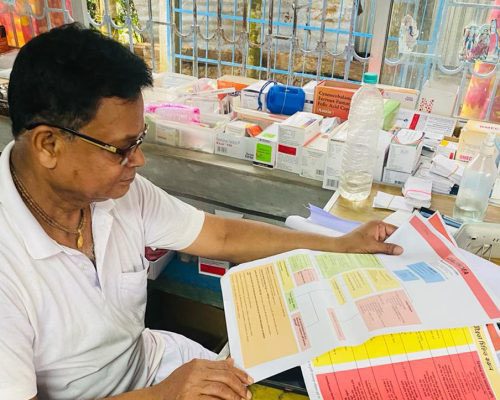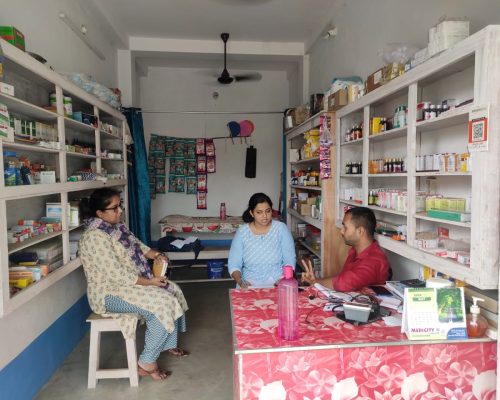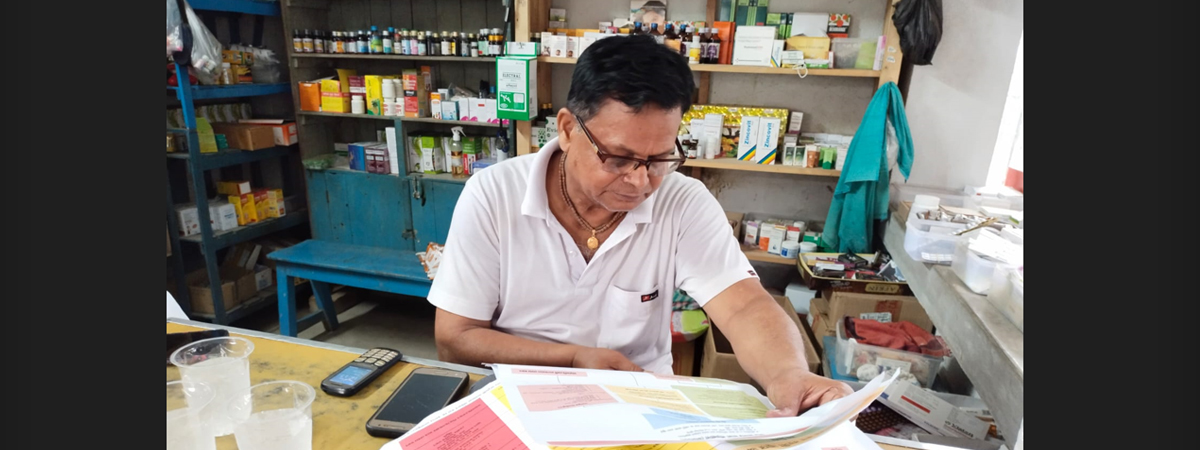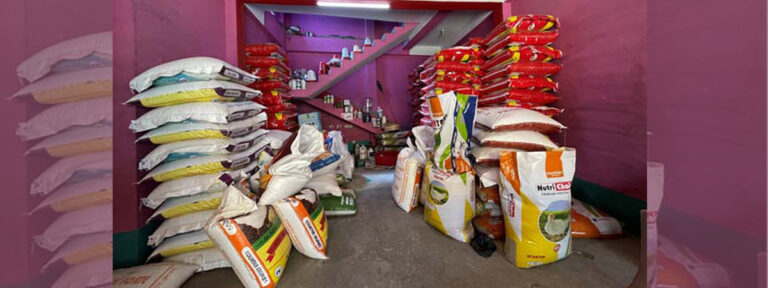The OASIS team conducted a series of consultations over June to October 2021 with stakeholders from the veterinary sector, medical practitioners, pharmaceutical sector and policymakers. These consultations offered a range of recommendations for antibiotic stewardship interventions. However, a key recommendation that emerged across all stakeholder groups was the need to collaboratively develop a pragmatic set of guidelines to optimise antibiotic use among frontline providers at the primary care level for human and livestock health. The Expert Committee constituted through the OASIS project worked closely over several virtual meetings from December 2021 through March 2022 to develop guidelines that aim to:
- Assist frontline providers in identifying symptoms and red flag signs of conditions presented at primary care level,
- Encourage referrals to a higher care centre when appropriate, and
- Determine when and how to optimise use of antibiotics
The Committee deliberated over which clinical syndromes would be included within the scope of the guidelines and decided on five syndromes based on their high prevalence at the primary care level. These were:
- Acute unidentified fever
- Community acquired respiratory infections
- Urinary tract infections
- Acute watery diarrhea
- Skin soft tissue infections
Different members of the Expert Committee led the development of different guidelines based on their expertise. With provisional drafts ready for all clinical syndromes, we began working closely with partners at the All India Institute of Medical Sciences (AIIMS), Kalyani and State level partners from Nadia District, West Bengal to conduct a phased feasibility assessment with frontline providers. Through the feasibility assessment, we aim to understand frontline providers’ experience of using the guidelines and incorporating their suggestions into future drafts.
On May 23 2022, the first orientation session was conducted with frontline providers at the Sreenagar Primary Health Centre (PHC), Chakdaah Block, Nadia District, 35 kms away from AIIMS Kalyani. The session was introduced by a leader from the community with whom frontline providers routinely engaged with. Mr. Tanmoy Halder, the Block Medical Officer of Health addressed the frontline providers and offered an introduction to the session. Dr. Dilip Halder, the Sreenagar PHC doctor, was also in attendance. Dr. Aloke Biswas from AIIMS Kalyani then delivered a presentation on background information including disease spread, germ theory, antibiotics and AMR followed by an introduction of guidelines developed for fever and diarrhea. The guidelines were translated into Bengali to align with providers’ language preferences. Dr. Biswas went through each of the guidelines in detail and offered training on how to use the guidelines in providers’ daily practice.


Following a Q and A session, frontline providers were provided with the guidelines and were requested to use them for over a week. This allowed providers to see a range of patients and determine if and how the guidelines supported their decision-making process regarding common symptoms presented, treatment and antibiotic use.
Between May 31-June 3, the research team conducted in-depth interviews (IDIs) and a feedback workshop to understand frontline providers’ experience with the guidelines. Guides were prepared in advance for both to drive the interviews and workshops towards the aim of the feasibility assessment, I.e. gaining a deep understanding of the providers’ experience using the guidelines.


Both the IDIs and the feedback workshop revealed suggestions regarding representation of the guidelines which were incorporated into updated versions. The guidelines were positively received and several frontline providers also expressed the value of the guidelines, with one stating “How to identify the illness is the best functionality of these guidelines…I like this feature of the guideline… It shows how medicines can be given later… first, identifying the illness is important…”
The second orientation session was conducted on June 27. Providers were presented with guidelines for upper and lower respiratory tract infections.
A detailed report of the second orientation session can be found here.
A third orientation session is being planned for mid July for the remaining guidelines. IDIs and a final feedback workshop will also be conducted with the same providers who participated in the first session.




